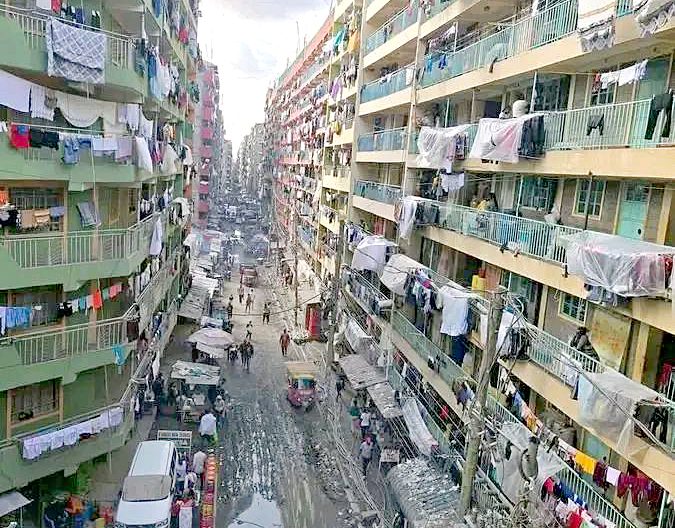Struggling to breathe: Is Nairobi becoming an unlivable jungle?

When it heavily rains in Nairobi and major cities across Kenya, lives get submerged in water. Commuters wade through knee-deep flooded roads to catch buses to the next destination, and homeowners in various urban settlements assess the damage to their properties.
The situation deteriorates further in residential areas, particularly in the informal settlements. A pungent smell of waste and overflowing sewage wafts through the streets, choking the locals.
That’s Nairobi, the city of choking air, during the rainy season!
Air pollution alone causes over 18,000 premature deaths in Kenya every year, according to the World Health Organisation (WHO), with Nairobi bearing a significant share of the burden.
Like many major cities across Africa, Nairobi is experiencing rapid urbanisation, with growth rates in major settlements skyrocketing.
As more people flock to the city, projections suggest that Nairobi is on track to join the ranks of Africa’s “megacities” by 2050, following Cairo, Kinshasa, and Lagos, respectively.
A megacity is defined as an urban centre with a population of at least 10 million people.
Fastest-growing cities
Currently, with a population of 5.5 million and an annual growth rate of four per cent, Nairobi is one of Africa’s fastest-growing cities.
During peak hours, the traffic in the city moves at a snail’s pace. Whether it’s the concern of being hit by vehicles, pushcarts, or motorbikes, or simply the frustration and risk of being stuck in human traffic, congestion is a daily challenge.
These issues are common occurrences in many developing countries and affect urban cities around the world.
Experiencing the same situation in residential areas, typically thought to be tranquil and peaceful, makes the circumstances dire.
In most of Nairobi’s informal settlements, life is becoming unbearable, leading to significant issues beyond just walkability.
Nairobi’s rapid urbanisation presents challenges such as inadequate infrastructure, poor urban planning, and housing shortages.
Regina Nawiri, a resident of Pipeline area in Embakasi North Constituency, home to over 200,000 people, is acutely aware of the impact of overpopulation.
Nawiri shares her difficulties caused by overcrowding in urban areas.
“When you come home after dealing with thousands of people in the streets, you also have to navigate through an overwhelming number of residents just to reach your apartment. Unlike the Central Business District, where there are regulations, it becomes chaotic here,” says the mother of three, who lives in a ten-storey apartment building with 17 units on each floor.
“You can easily get hit by reckless motorists or pushcarts carrying goods for vendors.”
She emphasises that children are at greater risk. The living conditions inside the crowded apartment compound the issues.
Residents exposed to health risks
Nawiri points out that despite having 17 units on each floor, the high-rise building has only one toilet and two bathrooms per floor.
Sharing these common facilities exposes residents to health risks, making them susceptible to infections and illnesses. And the health issues do not end there.
For example, health experts are recording a resurgence of rickets in major urban informal settlements associated with modern lifestyle changes, as more people now prefer to spend most of their time indoors.
“Most of the residents here are families, so each unit typically has at least three people. All of them have to use these shared facilities, which makes it impossible to maintain hygiene. With hundreds of people utilising these facilities daily, the health risks for us are significant,” she states.
She rarely allows her children to play or linger outside the building due to the fear of them getting lost, which is a common occurrence in the area.
“It’s easy for children to get lost here. Most of them, when they go out, get confused. The buildings are numerous and look alike. Also, with the high number of people, especially in the evening when individuals are returning from work and school, a child can easily become lost,” Nawiri explains.
In Kamongo area (also known as Kijiji Mpya) near Kayaba Estate, Ramah Wekesa constantly remains cautious while walking around because of rising insecurity in the neighbourhood.
“You’ve got to be on high alert. When many people are walking, pickpockets are always preying on unsuspecting residents,” Wekesa says.
Because of this, Wekesa notes that something as simple as walking has turned into a burden, forcing him to stay indoors where he can enjoy some semblance of tranquillity.
“If I’m not going to work and don’t have anything planned outdoors, I’d rather stay indoors. It’s better and safer than being outside where I attract a lot of attention,” he laments.
Once considered a haven for opportunities, Nairobi’s growing population and unplanned development are increasingly making the city unlivable.
Joseph Karanja, a Geospatial Expert at Arizona State University, explains that congestion in the city is caused by several systemic factors, including weak enforcement of development controls.
“Planning principles are not well integrated in Nairobi. For instance, a mix of diametric and radial routes could reduce commuting distances and enhance public transport efficiency,” Karanja states.
In contrast, European capitals, including Amsterdam, have dedicated cycling lanes that enhance multimodal transport, Karanja adds. As a result, it is the residents of Nairobi who bear the burden of congestion.
“The risks associated with a poorly designed city range from economic losses, health hazards, road safety risks, poor air quality, and theft. Delays and inefficiencies in transport increase operational costs and reduce productivity,” Karanja explains.
Enforcing planning regulations
Air pollution from vehicular emissions contributes to respiratory illnesses, while inadequate pedestrian walkways can lead to fatalities.
To address these issues, Karanja recommends enforcing stringent developmental and planning regulations and policies, as well as creating integrated, multi-modal infrastructure that accommodates diverse users, including pedestrians and cyclists.
The national and county governments have embarked on an ambitious project to transform the city by building pedestrian walkways and using technology to manage traffic, but obstacles persist.
Street hawkers have invaded some of the pedestrian walkways, complicating mobility.
Additionally, Karanja advocates for leveraging technology to implement adaptable traffic controls and real-time monitoring of both traffic flow and pedestrian movement.
For instance, introducing congestion pricing during peak hours could be effective in managing uncontrolled sprawl in the central business district (CBD) and residential areas.
“Cities around the world have successfully implemented intelligent planning and leveraged technology that Nairobi can learn from. For example, Singapore has established a smart traffic management system, including real-time traffic monitoring and adaptive traffic signals, along with an integrated multi-modal transit system. Barcelona has created designated blocks that prioritise pedestrians and cyclists,” he states.
John Dominic (an architect working with the national government and who wishes to remain anonymous because he is not authorised to speak to the media) points out that affordability and proximity are key drivers of overpopulation in certain settlements.
To reduce rural-urban migration and prevent the city from becoming unlivable, he emphasises the need to decentralise essential services to satellite towns and cities in rural areas.
He also advocates for the expansion of current housing projects into these satellite towns.
Dominic adds that Kenya lacks effective public transportation models and efficient road systems, which prompts residents to prefer living near the central business district, leading to congestion.
“Even in developed countries, residential planning reaches impressive heights. If you look at the skyscrapers in China, it’s remarkable because they are also grappling with issues of overcrowding and population growth,” he said in conclusion.















